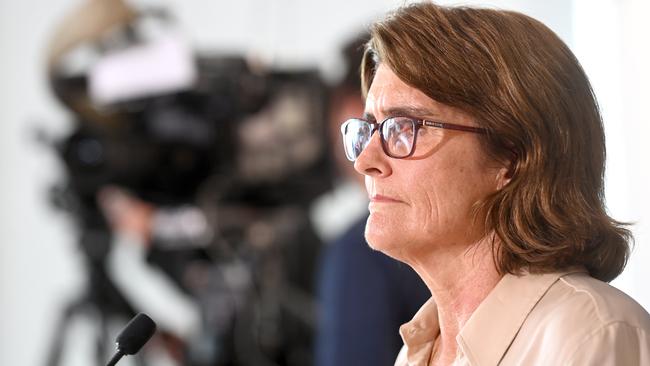
If you trust the numbers – a jobless rate of 3.7 per cent, employment up 116,000 last month – Australia’s jobs miracle means the nation is following the yellow brick road to a post-pandemic soft landing amid a much larger population than anyone expected.
Enjoy it while it lasts, because the Reserve Bank board believes labour market conditions are “tighter than is consistent with sustained full employment and inflation at target”.
The February labour force figures are, improbably, too true to be good for borrowers, suggesting an economy where demand keeps responding to the decades’ high increase in labour supply from spend-while-you-can foreign students, backpackers and temporary workers.
It may be an artificial burst, a one-off, a catch-up after the crisis, but young foreigners keep on coming here to study, work, play and spend.
Last September was probably the peak in annual net overseas migration at just shy of 550,000, or 60 per cent above the previous year’s intake.
Since Labor came to power in May 2022, the population has grown by around one million people; a generation ago, when Paul Keating rode in a white Holden Caprice plated C*1 rather than a brown Skoda sedan, it used to take us five years to grow by a million people.
Roughly, four-in-five of that record growth in residents, or 800,000, are migrants. Guess how many jobs have been created over that period? Bingo, pretty much one for one.
Without that enormous wave of people power, the RBA’s aggressive monetary tightening would have plunged the economy into recession; minus the migrant surge, rents and inflation would have been weaker and perhaps a cut in the cash rate and mortgage rates would have been in play.
The RBA is watching and waiting for clearer signals amid a statistical swirl; it’s not ruling anything in or out on its next cash-rate move.
Despite the murky picture, a loosening in the labour market is most likely under way if you consider the broader dashboard that the central bank observes.
Westpac economists point out that last year’s record growth in the working-age population probably peaked at an annual rate of 3 per cent in September.
“The bounce back in international students and immigrants returning to Australia when borders reopened was larger than anyone expected,” Westpac’s Ryan Wells and Pat Bustamante said.
In any case, jobs growth isn’t keeping up with supply, the forward indicators of demand such as vacancies have turned, and the trend in the jobless rate is expected to drift higher.
Something to lift household spirits is that even in a rapidly slowing economy, employers are cutting back on workers’ hours rather than their headcount.
The news on jobs and population saw some economists pushing back, slightly, the day when the RBA will ease the monetary squeeze to later this year, probably in the slipstream of rate cuts by the trailblazing US Federal Reserve.
From now on, the data readings will not always fall into a perfect line for those who set our monetary conditions, as inflation falls from its 8 per cent peak at the end of 2022, and the jobless rate creeps up in a consumer-constrained economy.
That’s why the RBA board is not in a rush to declare its hand; inflation is high and retains a decent pulse, and maybe wage pressures remain in a country that is a magnet for migrants and is still cranking out fresh jobs.








Michele Bullock often summons her predecessor’s description of traversing the fraught and narrow path on setting interest rates in a world of tumult and recovery from disrepair.